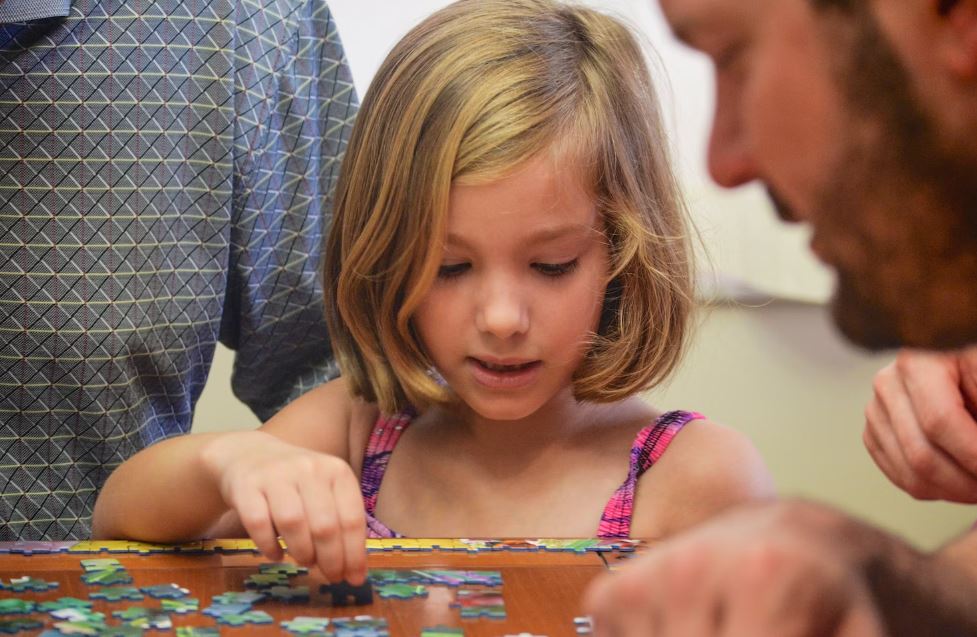Introduction
Nurturing a love for reading in young bookworms is a wonderful way to spark their imagination and foster a lifelong appreciation for literature.
If you’re looking for ideas, advice, or recommendations on how to inspire young readers, you’re in the right place. In this reading, you’ll explore various aspects of encouraging a passion for reading in children and suggest thoughtful gifts that can play a pivotal role in this endeavor. Whether you’re a parent, teacher, or simply a book-loving friend, these answers will help you inspire and support the young bookworms in your life.
Importance Of Reading in A Child’s Life
Reading plays a vital role in a child’s life, serving as a cornerstone for their intellectual and emotional development. It is a powerful tool that nurtures language skills, stimulates cognitive growth, and fosters creativity. When children engage with books, they embark on journeys to new worlds, encounter diverse characters, and explore a range of ideas and emotions. Reading cultivates empathy, broadens their horizons, and builds the foundation for academic success. Moreover, it enhances their concentration, communication skills, and vocabulary. The habit of reading not only offers an escape from stress but also instills a lifelong love for learning and the capacity to think critically. Reading is more than just a pastime, it is a transformative experience that equips children with the tools they need to navigate the complexities of the world and become well-rounded individuals.
Choosing the Right Book
Understanding The Child’s Interests
Understanding a child’s interests is akin to unlocking the key to their world. It’s a process that involves keen observation, active listening, and meaningful engagement. By paying attention to what a child naturally gravitates toward, whether it’s a favorite toy, a particular subject in school, or a recurring topic in conversation, we gain valuable insights into their passions. Asking open-ended questions and participating in their activities allows us to delve deeper, uncovering what truly fascinates them. Whether it’s the thrill of exploring a museum exhibit, the joy of reading a beloved book, or the creative spark ignited during play, these moments provide windows into their interests. As caregivers, parents, and educators, our role is to respect and nurture these interests, creating an environment where a child feels encouraged to explore, learn, and grow in the areas that spark their curiosity and enthusiasm. In understanding a child’s interests, we foster not only their personal development but also a strong connection built on shared experiences and genuine appreciation for who they are becoming.
Selecting Books That Match the Child’s Reading Level
Selecting books that match a child’s reading level is crucial to ensure they have a positive and rewarding reading experience. Here are some steps to help you choose books that are appropriate for a child’s reading level:
Assess Reading Level
Before selecting books, it’s important to assess the child’s reading level. There are various methods to do this, such as consulting with their teacher, using standardized tests, or observing their reading performance at home. Common reading levels include Lexile levels, guided reading levels, or grade levels.
Consult Reading Guides
Many educational publishers and organizations provide reading guides or book lists that categorize books by reading level. These guides can be a valuable resource when searching for age-appropriate books.
Use Online Tools
Several online tools and websites offer book recommendations based on a child’s age, grade, or reading level. Websites like Scholastic Book Wizard and Reading Rockets can be helpful in this regard.
Visit the Library
Librarians are knowledgeable about children’s literature and can recommend books based on a child’s reading level and interests. They can also guide you to books that align with school reading programs.
Consider the “Five Finger Rule”
Have the child read a page from a book they are interested in. If they encounter five or more words they don’t understand on a single page, the book may be too challenging for their current reading level.
Look for Series
Many book series are designed with a range of reading levels in mind. Find a series that interests the child and offers books at their current reading level and gradually increasing levels as they progress.
Check Book Summaries
Read book summaries, synopses, and reviews to get a sense of the book’s content, themes, and difficulty level. This can help you determine if it’s a suitable choice.
Consider Interests
Take into account the child’s interests and hobbies when choosing books. Children are more likely to engage with books that align with their passions, making the reading experience more enjoyable and motivating.
Preview the Book
Read the first few pages of the book or a random page to assess the complexity of the language, sentence structure, and vocabulary. Ensure that it’s a comfortable challenge for the child, not too easy or too difficult.
Ask for Recommendations
Seek recommendations from teachers, parents, or caregivers who have children of similar reading levels. They may have valuable insights into books that have been well-received by children at that stage.
Encourage Exploration
While it’s important to choose books that match the child’s reading level, don’t discourage them from occasionally exploring books slightly above their level. This can help stretch their skills and vocabulary.
Monitor Progress
Keep track of the child’s reading progress and adjust book selections accordingly. As their reading skills improve, gradually introduce more challenging books.
Remember that children’s reading levels can vary, and it’s important to choose books that provide an appropriate balance of challenge and enjoyment. A well-matched book will not only enhance their reading skills but also foster a love for reading.
Reading Environment
Creating A Cozy Reading Nook
Creating a cozy reading nook is a wonderful way to encourage reading and provide a comfortable, inviting space for relaxation and exploration through books. Here’s a guide on how to create the perfect reading nook:
- Choose the Right Location. Select a quiet and comfortable spot in your home, ideally with natural light. A corner by a window, under a staircase, or even a bay window can be ideal.
- Comfortable Seating. Make an investment in cozy seating. A cozy armchair, a bean bag chair, floor cushions, or even a window seat with plush cushions can work well.
- Soft Furnishings. Add soft furnishings like throw pillows, blankets, and rugs to make the space extra comfortable and inviting. These also add a touch of coziness and warmth.
- Good Lighting. Ensure there’s adequate lighting for reading. Natural light is best during the day, but also provide a reading lamp or wall sconces for evenings.
- Shelving or Bookcase. Install a bookcase or floating shelves to store books within easy reach. You can arrange them neatly and even add decorative elements.
- Personal Touches. Personalize the space with the child’s name, artwork, or favorite quotes. You can also add framed pictures or artwork that relates to books or reading.
- Book Storage. Use baskets, crates, or cubbies to store books, magazines, or e-readers. This keeps the reading materials organized and within arm’s reach.
- Cozy Accessories. Include cozy accessories like a soft blanket, a reading-themed mug, a small side table for drinks or snacks, and a scented candle or diffuser for a pleasant atmosphere.
- Inspiring Décor. Decorate the space with posters, art prints, or wall decals related to books, reading, or favorite literary characters. This can spark the child’s imagination.
- Quiet Atmosphere. Make sure the reading nook is a calm and serene area. Minimize distractions, such as TVs or loud electronics.
- Bookends and Bookmarks. Consider decorative bookends to keep books in place, and provide colorful bookmarks or bookplates to enhance the reading experience.
- Involve the Child. Let the child have a say in the decoration and arrangement of the nook. It will feel more like “their” space if they have a role in its creation.
- Regularly Update Reading Materials. Keep the reading nook stocked with a variety of age-appropriate books and reading materials. Update them regularly to keep the child’s interest piqued.
- Encourage Reading Rituals. Establish reading rituals in the nook, such as reading before bedtime or dedicating specific times for reading. Consistency can reinforce the habit.
A cozy reading nook provides a sanctuary where a child can escape into the world of books, fostering a lifelong love for reading and learning. It’s a space where imagination can flourish, and special memories can be created through the magic of storytelling.
Providing Adequate Lighting
Providing adequate lighting is essential when creating a reading nook to ensure comfort, minimize eye strain, and create an inviting atmosphere. Here are some tips on how to achieve optimal lighting in a reading nook:
- Natural Light. If possible, position the reading nook near a window to take advantage of natural daylight. Natural light is ideal for reading as it reduces the strain on the eyes and provides a pleasant ambiance.
- Window Treatments. Use window treatments like curtains or blinds that can be adjusted to control the amount of natural light entering the space. Sheer curtains can diffuse harsh sunlight while still allowing plenty of light to filter through.
- Reading Lamp. Include a dedicated reading lamp in the nook. A floor lamp or table lamp with adjustable height and angle is ideal. Choose a lamp with a warm, soft white LED or incandescent bulb to create a cozy atmosphere.
- Task Lighting. Ensure that the light source is directed toward the reading material. Adjustable or swiveling lamps can be positioned over the reading chair or table to provide focused lighting.
- Overhead Lighting. If the reading nook is in a room with overhead lighting, consider installing a dimmer switch or using pendant lights with adjustable brightness to create a more relaxed reading environment.
- Wall Sconces. Wall-mounted sconces can provide ambient lighting and add a decorative touch to the reading nook. Opt for fixtures that are adjustable to direct light where it’s needed.
- Color Temperature. Pay attention to the color temperature of the light bulbs. Choose bulbs with a color temperature in the 2700K to 3000K range, which mimics the warm, soothing glow of natural sunlight.
By providing adequate lighting in your reading nook, you create a comfortable and inviting space where reading becomes a pleasure. Proper lighting not only enhances the reading experience but also contributes to the overall ambiance and functionality of the nook.
Reading Accessories
Bookmarks and Page Holders
Bookmarks and page holders are practical and decorative accessories that can enhance the reading experience, help readers keep their place in a book, and add a personal touch to their reading materials. Here’s an overview of bookmarks and page holders:
Bookmarks
- Traditional Bookmarks
These are the most common type of bookmarks and come in various materials, such as paper, cardstock, plastic, metal, or fabric. They often feature designs, quotes, illustrations, or photographs related to literature or personal interests.
- DIY Bookmarks
Crafty individuals can create their own bookmarks using materials like colored paper, cardboard, ribbons, or even repurposed items. Customized bookmarks make wonderful presents.
- Magnetic Bookmarks
These bookmarks have magnets on both ends, allowing them to grip the page and stay securely in place. They are particularly useful for keeping your place in a book when on the go.
- Corner Bookmarks
These are small, triangular bookmarks designed to fit over the corner of a page. They mark the exact spot where you left off and come in various styles and materials.
- Tassel Bookmarks
Tassel bookmarks feature a tassel attached to the top. They add a touch of elegance and style to your reading material.
- 3D or Pop-Up Bookmarks
These bookmarks have three-dimensional designs that pop out when inserted into a book. They are fun and visually appealing.
- Electronic Bookmarks
Some e-readers and reading apps have built-in bookmark features that allow you to digitally mark your place in a digital book.
Page Holders
- Finger Page Holders
These are small, lightweight devices that clip onto your thumb or finger, making it easier to flip pages without smudging or damaging the book.
- Page Anchor or Weighted Page Holder
A page anchor is a weighted object, often made of metal or wood, designed to hold the pages of a book open. It prevents the book from closing while you’re reading, making it ideal for cookbooks, textbooks, or reference materials.
- Book Page Holder Rings
These are adjustable rings that you wear on your thumb, and they have a small clip that holds the pages open while you read. They are ergonomic and useful for hands-free reading.
Choosing Bookmarks and Page Holders
When selecting bookmarks and page holders, consider the following:
- Material and Style. Choose bookmarks and page holders that match your personal style or the theme of your reading material.
- Durability. For physical books, opt for bookmarks made from sturdy materials. Magnetic bookmarks or corner bookmarks can be particularly durable.
- Size. Ensure that the bookmark or page holder fits comfortably within your book without causing damage or distortion.
- Functionality. Page holders should effectively keep your book open without causing discomfort during extended reading sessions.
- Decoration. Personalize your bookmarks or page holders with quotes, illustrations, or designs that resonate with your reading preferences.
Whether you prefer traditional bookmarks with beautiful designs or functional page holders that make reading more convenient, these accessories can be a delightful addition to your reading experience. They also make thoughtful gifts for fellow book lovers.
Reading Lights and Book Stands
Reading lights and book stands are practical accessories that can greatly enhance the reading experience by providing proper illumination and ergonomic support for books. Here’s an overview of reading lights and book stands:
Reading Lights
Clip-On Reading Lights. These compact and portable lights can be clipped onto the pages of a book or magazine. They provide focused lighting on the reading material and are ideal for reading in low-light conditions.
Bookshelf Lights. Bookshelf lights are small, adjustable lamps that can be mounted on bookshelves or other surfaces. They provide indirect lighting to create a cozy reading ambiance in a room.
Floor Lamps. Tall floor lamps with adjustable necks or heads can be positioned to direct light where needed. They are suitable for reading in larger spaces or next to a comfortable reading chair.
Table Lamps. Table lamps are versatile and can be placed on nightstands, desks, or reading tables. They offer adjustable lighting levels and can complement your room’s decor.
Headlamps. If you enjoy reading while lying down or in bed, a headlamp can be a hands-free option. Adjustable headlamps allow you to direct light precisely onto the page.
Reading Glasses with Lights. Reading glasses with built-in LED lights are convenient for those who need reading glasses. The lights focus on the reading material and eliminate the need for additional lighting.
LED Book Lights. Compact and energy-efficient, LED book lights are designed to attach directly to books or e-readers. They provide bright, even illumination without generating heat.
Book Stands
- Folding Book Stands. These portable and adjustable book stands are designed to hold books open at a comfortable reading angle. They often come with page clips to keep the book in place.
- Adjustable Book Holders. These holders can be adjusted to accommodate different book sizes and reading angles. They are ideal for cookbooks, reference materials, or sheet music.
- Bookrests with Page Holders. Bookrests with built-in page holders or clips help keep the book open while reading. They are suitable for larger books or for those with limited dexterity.
- Easel Book Stands. Easel-style book stands have a decorative and artistic appearance. They are often used for displaying books, but they can also be used for comfortable reading.
- Cookbook Stands. Specifically designed for holding cookbooks open while cooking, these stands are sturdy and often include splash guards to protect the pages from spills.
- Lap Stands. Lap stands with a cushioned base and an adjustable book holder are perfect for reading in bed or on the couch. They provide stability and comfort.
Choosing Reading Lights and Book Stands
When selecting reading lights and book stands, consider the following:
- Lighting Type. Choose a reading light that provides the right level of brightness for your reading environment. LED lights are energy-efficient and long-lasting.
- Adjustability. Look for lights and stands that are adjustable to accommodate various book sizes and reading angles.
- Portability. If you like to read in different locations, consider the portability of the reading light or stand.
- Sturdiness. Ensure that the book stand is stable and can securely hold your reading material.
- Aesthetics. Consider how the reading light or book stand fits into your overall decor and personal style.
By incorporating the right reading light and book stand into your reading routine, you can enjoy a comfortable and well-illuminated reading experience, whether you’re engrossed in a novel, studying a textbook, or cooking from a recipe book.
Reading Games and Activities
Word Games and Puzzles
Word games and puzzles are not only fun and entertaining but also provide mental stimulation, improve language skills, and enhance cognitive abilities. Here are some popular word games and puzzles that you can enjoy:
- Crossword Puzzles
Crosswords involve filling in a grid with words based on given clues. They come in various difficulty levels and can challenge your vocabulary and knowledge.
- Word Search
In word search puzzles, you search for specific words hidden within a grid of letters. Words can be arranged in any direction, making it a fun and relaxing activity.
- Scrabble
Scrabble is a classic word game where players create words on a game board using letter tiles. Each letter has a point value, and players compete to form high-scoring words.
- Boggle
Boggle is a fast-paced word game where players form words by connecting adjacent letters on a grid within a set time limit. The longer and less common the word, the more points it earns.
- Hangman
In the game of Hangman, one participant thinks of a word, while the other participant makes letter suggestions in an attempt to predict it. A hangman figure is drawn for each wrong guess. To guess the word before the figure is finished is the objective.
- Anagrams
Anagrams are word puzzles where you rearrange the letters of a given word or phrase to form other words. It’s a great exercise for wordplay and vocabulary expansion.
- Jumble
Jumble puzzles provide a set of scrambled letters that need to be unscrambled to form a word. Some variations also include clues to help you solve the puzzle.
- Acrostics
Acrostics are puzzles where you use the initial or end letters of a series of words to spell out a hidden message or phrase. They often include clues to help you find the words.
- Cryptograms
Cryptograms are encoded messages where each letter is replaced by another letter or symbol. To crack the code and disclose the original message was your mission.
- Riddles
Word riddles pose a question or statement with a hidden answer or meaning that needs to be deduced through wordplay and creative thinking.
- Hangman
In Hangman, one player thinks of a word and the other player tries to guess it by suggesting letters. With each incorrect guess, a part of a hangman figure is drawn. The goal is to guess the word before the figure is completed.
- Word Ladders
Word ladders challenge you to change one word into another by changing one letter at a time, with each step forming a valid English word. It’s a test of vocabulary and lateral thinking.
- Crossword Puzzles
Crossword puzzles involve filling in a grid with words based on given clues. They come in various difficulty levels and can challenge your vocabulary and knowledge.
- Banana Grams
Banana Grams is a fast-paced word tile game similar to Scrabble but without a game board. Players race to create their crossword grids as quickly as possible.
- Online Word Games
Numerous word games and puzzles are available online or as mobile apps. These include word search apps, anagram games, and word quiz challenges.
Word games and puzzles are not only enjoyable but also offer mental exercise and a chance to expand your vocabulary. They are great solo activities or can be enjoyed with friends and family, making them a versatile form of entertainment and learning.
Storytelling and Role-Playing Games
Storytelling and role-playing games (RPGs) are immersive and creative forms of entertainment that encourage participants to step into the shoes of characters in a fictional world, collaborate with others, and collectively shape a narrative. Here’s an overview of storytelling and role-playing games:
Storytelling Games
- Story Cubes. Story cubes are dice with images or symbols on each side. Players roll the dice and use the images to create a story based on what they see. It’s a great game for sparking creativity and improving storytelling skills.
- Once Upon a Time. This card game provides players with a set of story elements (characters, items, events) to incorporate into a shared story. The goal is to use your cards and steer the narrative towards your own ending.
- Rory’s Story Cubes. Similar to story cubes, Rory’s Story Cubes are dice with pictorial symbols. Players roll the dice and take turns adding to a collaborative story based on the images rolled.
- Tell-A-Story Cards. These cards contain story prompts or sentence starters to inspire storytelling. Players take turns drawing a card and adding to an ongoing narrative.
Role-Playing Games (RPGs)
- Dungeons & Dragons (D&D). D&D is perhaps the most well-known tabletop RPG. Players create characters with unique abilities and go on adventures guided by a Dungeon Master (DM). The game involves storytelling, problem-solving, and dice rolling to determine outcomes.
- Pathfinder. Pathfinder is another popular tabletop RPG that offers a rich fantasy world and extensive rulebooks for character creation and gameplay.
- World of Darkness. This RPG series includes games like Vampire: The Masquerade and Werewolf: The Apocalypse, where players take on supernatural roles and explore dark, urban fantasy settings.
- Shadowrun. Combining cyberpunk and fantasy elements, Shadowrun allows players to take on the roles of mercenaries in a dystopian future.
- Fate Core. Fate Core is a flexible RPG system that emphasizes storytelling and collaborative world-building. Players create their settings and characters, and the rules are designed to adapt to various genres.
Storytelling and role-playing games provide opportunities for creativity, teamwork, problem-solving, and imaginative exploration. Whether you prefer tabletop RPGs, storytelling card games, or video game RPGs, these activities offer immersive experiences where you can become a hero, villain, or explorer in a world of your own making or shaping.
Reading Challenges and Programs
Summer reading programs at local libraries
Summer reading programs at local libraries are a fantastic way to encourage reading and learning during the summer break. These programs are typically designed for children and teenagers but may also include offerings for adults. Here’s an overview of what you can expect from a typical summer reading program at a local library:
- Reading Challenges
Participants are encouraged to read a certain number of books, pages, or hours during the summer. Reading goals may vary by age group, and some libraries offer rewards for achieving these goals.
- Registration
To get started, participants need to register for the program. This often involves visiting the library to sign up, though some libraries may offer online registration.
- Reading Logs
Participants receive reading logs to track their reading progress. They can record the titles of books, the number of pages, or the time spent reading. These logs help libraries keep records of participants’ accomplishments.
- Library Events
Libraries organize a variety of events throughout the summer, such as author visits, storytelling sessions, book clubs, craft activities, and more. These events are designed to promote reading, learning, and community engagement.
- Prizes and Incentives
Many summer reading programs offer incentives for reaching reading goals. Prizes can include books, bookmarks, gift cards, or entry into raffles. Incentives aim to motivate participants to continue reading.
- Age Categories
Programs often have different categories for children, teenagers, and sometimes adults. This allows participants to engage in age-appropriate reading and activities.
- Community Engagement
Libraries may partner with local businesses and organizations to offer additional incentives or discounts to participants in the program. This fosters a sense of community involvement.
- Educational Themes
Some summer reading programs are organized around specific themes or topics. These themes can add an extra layer of fun and learning to the reading experience.
- Tracking Progress
Participants can periodically check in with the library to report their progress. This can include updating their reading logs, sharing book recommendations, or attending library events.
- Culmination and Celebrations
At the end of the summer, libraries often host celebratory events where participants can turn in their reading logs, receive recognition for their achievements, and celebrate their reading success.
Summer reading programs at local libraries serve multiple purposes, including preventing the “summer slide” in children’s learning, fostering a love for reading, and promoting community engagement. They provide an enjoyable and educational way to spend the summer months while encouraging participants of all ages to explore new books and stories.
Online Reading Challenges and Book Clubs
Online reading challenges and book clubs are great ways to foster a love for reading, connect with fellow book enthusiasts, and discover new literary gems. Here’s an overview of these activities:
Online Reading Challenges
- Goodreads Reading Challenge. Goodreads, a popular social media platform for book lovers, allows users to set an annual reading goal. Participants can track their progress, rate books, and share recommendations with friends.
- PopSugar Reading Challenge. PopSugar creates a yearly reading challenge with a list of diverse reading prompts. Participants aim to read books that fit into each category, expanding their reading horizons.
- Around the World Reading Challenge. Some reading challenges encourage readers to explore books from different countries and cultures. These challenges promote global literature and cultural awareness.
- Genre-Specific Challenges. There are reading challenges dedicated to specific genres, like science fiction, fantasy, mystery, or non-fiction. Participants can immerse themselves in their preferred genre or explore new ones.
- Classics Challenges. For readers interested in classic literature, there are challenges that focus on reading the works of renowned authors or classics from different time periods.
- Diversity and Inclusivity Challenges. Some reading challenges emphasize reading books by diverse authors, exploring LGBTQ+ literature, or books featuring characters from underrepresented backgrounds.
- Reading Bingo. Bingo-style reading challenges feature a grid with various reading prompts. Participants aim to complete rows, columns, or diagonals on the grid by reading books that match the prompts.
Online Book Clubs
- Goodreads Book Clubs. Goodreads hosts a vast array of online book clubs, each focused on different genres, themes, and authors. Members discuss books in forums and participate in group reads.
- Facebook Book Clubs. Many book clubs operate on Facebook. These groups cover a wide range of genres and themes, and discussions take place in the comments section.
- Reddit Book Clubs. Subreddits like r/bookclub provide a platform for book enthusiasts to read and discuss a chosen book together each month.
- Instagram Book Clubs. On Instagram, users often host virtual book clubs through dedicated hashtags. Participants share their thoughts on the selected book using the hashtag.
- Author-Hosted Book Clubs. Some authors host their book clubs online, offering readers the unique opportunity to interact directly with the writer and gain insight into the book’s creation.
- Online Library Book Clubs. Many public libraries have adapted to the digital age by hosting book clubs online, making it easy for patrons to participate in discussions and access digital copies of selected books.
- Specialized Book Clubs. There are book clubs for specific interests, such as science fiction, fantasy, mystery, romance, and more. Participants can join a club that aligns with their favorite genres.
- One-Book, One-City Programs. Some cities or regions organize community-wide reading programs where residents are encouraged to read and discuss a specific book, often with author events and discussions.
Online reading challenges and book clubs offer a sense of community, a platform for sharing thoughts and recommendations, and opportunities to expand your reading preferences. They are especially beneficial for readers who enjoy a social aspect to their reading journey and want to connect with like-minded individuals. Whether you want to read diversely, explore new genres, or simply engage in lively book discussions, online reading challenges and book clubs provide something for everyone.
Encouraging Creativity through Reading
Writing Prompts and Journaling Exercises
Writing prompts and journaling exercises are effective tools to boost creativity, improve writing skills, and encourage self-reflection. Whether you’re a seasoned writer or just looking to enhance your self-expression, here are some prompts and exercises to inspire your writing and journaling:
Writing Prompts
- Write a letter to your future self, detailing your hopes, dreams, and goals.
- Describe a place from your childhood that holds a special memory.
- Imagine you are a character in your favorite book. Describe your adventures in that world.
- Write a story about an unexpected act of kindness you witnessed or experienced.
- Create a dialogue between two inanimate objects, like a pen and a notebook.
- Write a letter to someone who has influenced your life, whether positively or negatively.
- Describe the view from your window or a place you visit often, focusing on the details.
- Write about a time you faced a fear and how it changed you.
- Pick a random object in your room and write a story about its history.
- Write a poem about a natural phenomenon, like a thunderstorm or a rainbow.
Journaling Exercises
- Morning Pages: Each morning, jot down three pages of random thoughts. This practice can help clear your mind and spark creativity.
- Gratitude Journal: Every day, make a gratitude list of three things. This exercise promotes a positive outlook and mindfulness.
- Dream Journal: Record your dreams and analyze their symbolism. This may provide you access to your repressed feelings and thoughts.
- Bucket List: Create a journal dedicated to your dreams, goals, and aspirations. Document your progress in achieving them.
- Emotional Check-In: Reflect on your feelings and emotions each day. Write about what’s been bothering you or what’s made you happy.
- Travel Journal: Document your travels and experiences. Include sketches, mementos, and detailed descriptions of the places you visit.
- Letter to Your Younger Self: Write a letter of advice and encouragement to your younger self at different stages of your life.
- Stream of Consciousness: Write freely without worrying about grammar or punctuation. Let your thoughts flow onto the page without judgment.
- Character Journal: Create a journal from the perspective of a fictional character or historical figure. Write as if you are living in their time or world.
- Creative Writing Exercises: Experiment with writing exercises, such as writing from a different point of view, creating a story in 100 words or less, or rewriting a famous story with a different ending.
Reflective Prompts
- What are your top five values in life, and how do they guide your decisions?
- Describe a challenging situation you faced and what you learned from it.
- Write about a person who has had a significant impact on your life and explain why.
- Set goals for the next month, year, and five years. What steps will you take to achieve them?
- Write about a time you felt completely in your element, doing something that brought you joy.
- What do you consider your greatest accomplishment, and how did you achieve it?
- Explore your fears and doubts. What steps can you take to overcome them?
- Write a letter to your future self, reflecting on your current state of mind and goals.
- Describe a moment in your life when you felt truly alive and full of purpose.
- Write about a lesson you learned the hard way and how it changed your perspective.
Use these writing prompts and journaling exercises to spark your creativity, document your experiences, and gain valuable insights into your thoughts and emotions. Writing and keeping a journal can be effective methods for fostering personal development.
Art Projects Inspired by Books
Art projects inspired by books are a wonderful way to combine the joy of reading with creative expression. Whether you’re an artist, teacher, or simply looking for a fun project, here are some art ideas inspired by books:
Book Cover Redesign
Select a favorite book or a classic and design a new book cover for it. Create an image that reflects the book’s themes, characters, or your interpretation of its essence.
Character Portraits
Choose a beloved character from a book and create a portrait of them using various art mediums such as drawing, painting, or digital art.
Illustrated Quotes
Select memorable quotes from a book and turn them into visual art. Combine calligraphy and illustration to make the text come to life.
Dioramas
Create a diorama inspired by a scene from a book. Use shoeboxes or other small containers to build a three-dimensional representation of the setting or events.
Altered Book Art
Transform an old book into a piece of art by carving, painting, or collaging its pages. This process is known as altered book art.
Storybook Collage
Cut out images from magazines, newspapers, and other sources to create a collage that represents the themes or narrative of a book.
Pop-Up Book Art
Design and create a pop-up book that tells a condensed version of a story or highlights key scenes.
Book-Inspired Sculpture
Use clay, wire, or found objects to sculpt characters, objects, or scenes from a book.
Book Page Poetry
Select a page from a book and black out or cut out certain words to create a poem or message within the text.
Fan Art
Create fan art inspired by your favorite books, whether it’s illustrations of characters or scenes, or even entirely new artwork set in the book’s world.
Book-Character Masks
Craft masks representing characters from a book. You can use paper plates, cardboard, or any suitable materials.
Bookmarks
Design and make artistic bookmarks inspired by your favorite books. These can be given as gifts or used to mark your place in a current read.
Illustrated Maps
Create an illustrated map of a fictional world from a book, highlighting key locations and landmarks.
Book Spine Poetry
Arrange books on a shelf to create a poem using the titles on the spines. Photograph the arrangement for a visually striking piece of art.
Painted Book Page Art
Paint or watercolor on book pages, using the text and illustrations as a backdrop to create layered, visually interesting artwork.
Surreal Art
Experiment with surrealism, taking elements from a book and blending them in unusual, dreamlike ways.
These art projects allow you to connect with literature on a deeper level, express your interpretation of stories, and share your love for books through visual art. They’re also great for school projects, art classes, or as a creative outlet for book lovers.
Conclusion
In conclusion, nurturing the love for reading in young bookworms is a priceless gift that will last a lifetime. By providing them with the right tools, from an array of captivating books and cozy reading nooks to personalized bookmarks and engaging book-related activities, we not only kindle their passion for stories but also empower them with knowledge, empathy, and a boundless imagination. Encouraging young readers to explore the world of books is a gift that not only enriches their present but also promises a brighter future, filled with the joy of reading and the limitless adventures that books bring to life. So, let’s continue to inspire and support our young bookworms on their literary journeys, for in the pages of a book, they will find a lifelong friend and a world of endless possibilities.






